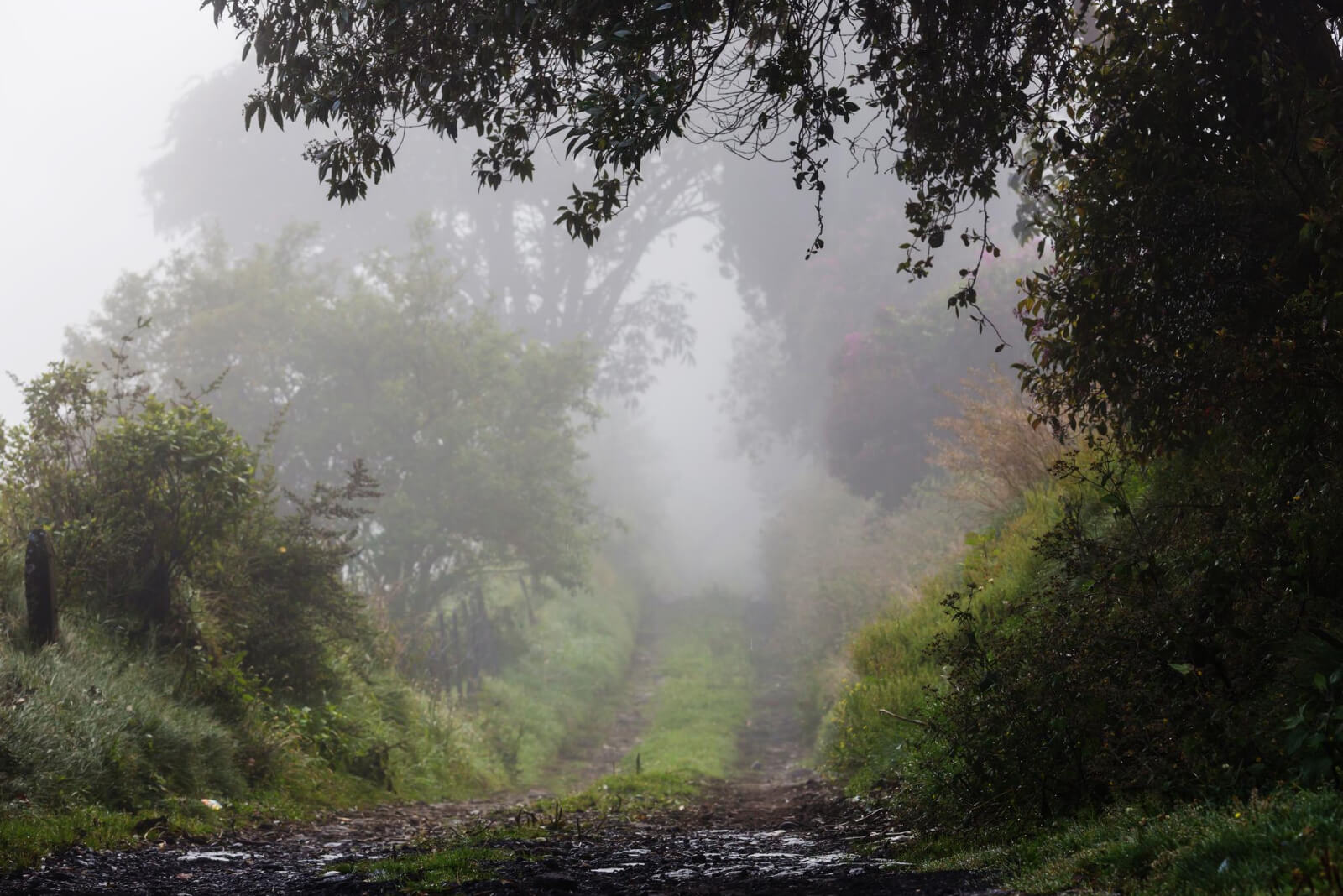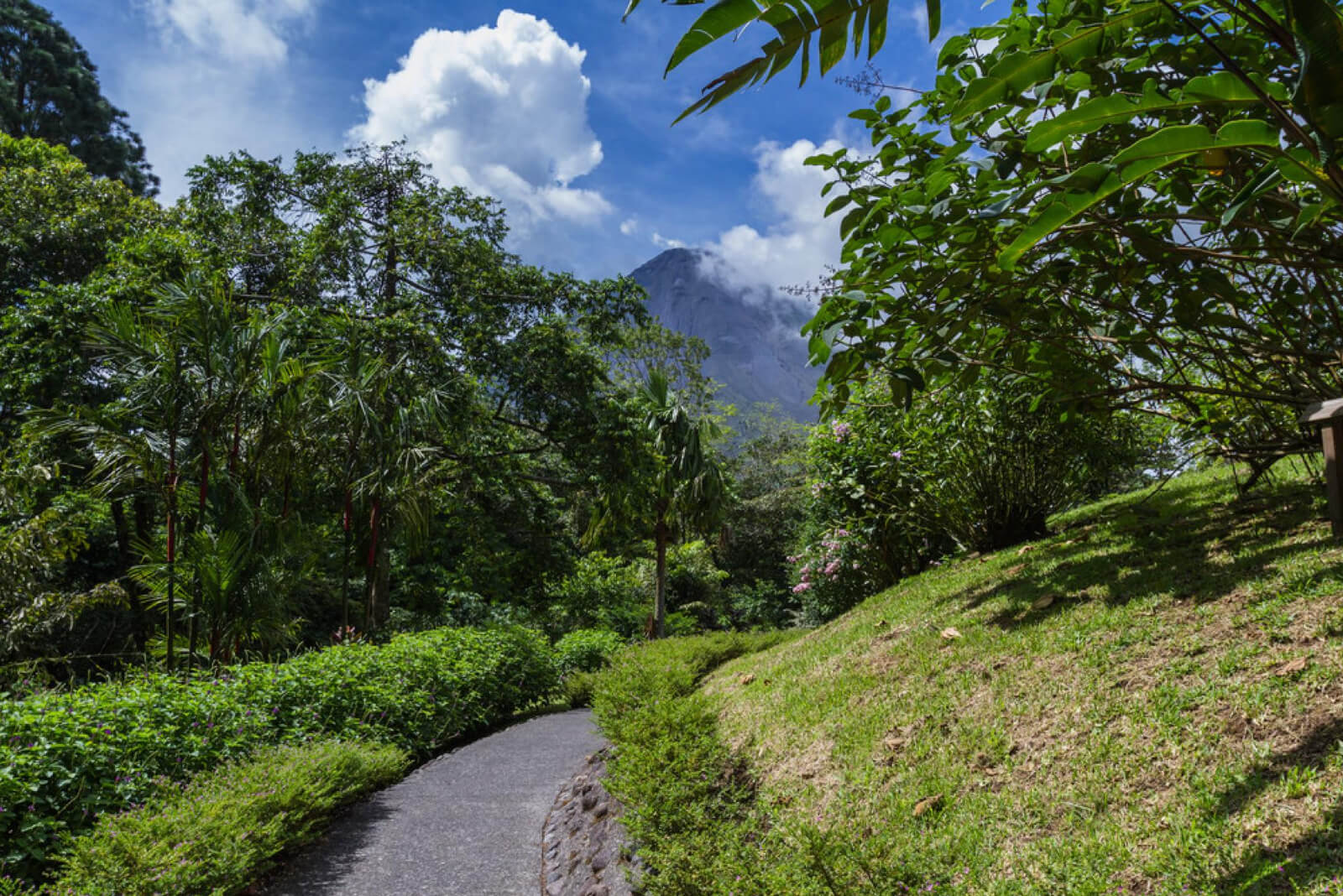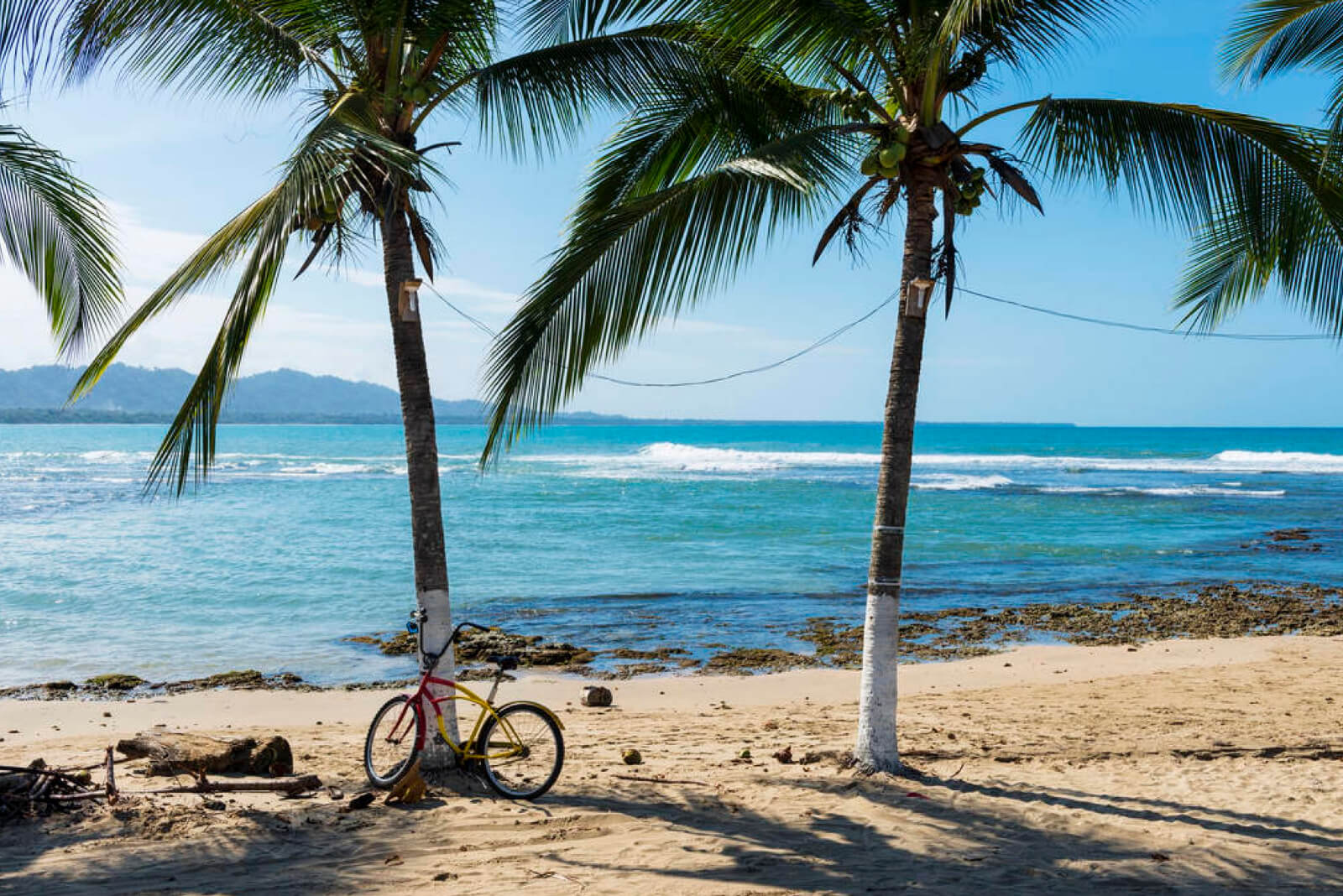What weather can you expect in Costa Rica? If you live in a tropical country like Costa Rica, then you probably don’t pay too much attention to the weather forecast because of how fluid the weather is. If you’re planning to visit Costa Rica, you may be curious to know more about the weather in Costa Rica or the best months to visit Costa Rica.
It’s natural to want to know what to expect during your visit to Costa Rica, so you know what items to pack! The climate varies from region to region, but generally speaking, Costa Rica’s two tropical seasons are the dry season and the rainy season. Let’s get into each season (and their months of transition) so you can see Costa Rica’s weather by month!
Dry Season in Costa Rica
Costa Rica’s dry season, where there are not supposed to be any rainstorms, is from the months of December to April. This means that the weather is supposed to be very hot and sunny. However, rain usually happens all year round in Costa Rica and there’s no running away from periods of rain during the dry season! Still, there are some months out of the year when Costa Rica is expected to be hot, sunny, and dry. The weather differs from region to region, but usually, the climate fluctuations are pretty consistent. There are also some intermediate regions where weather isn’t as sporadic, like San José, Heredia, and Cartago. Let’s get into the month-to-month breakdown of the weather in Costa Rica!
December is the transitional month between the rainy season and the dry season. Costa Rica’s “Christmas Winds” are strong winds that start up in December and rainfall is still apparent in high elevation areas and the tropical rainforests. Rainfall becomes less frequent in Mid-December and usually occurs only at night. This is around the time when you won’t be able to find accommodations because all accommodations are booked months in advance.
January is well into the dry season but may still have some short random showers in the high elevation areas. It’s very windy, dry, and hot in the coastal regions, but comfortable temperatures in the Central Valley and mountain ranges. Usually, the Central Valley area has the most temperate climate in all of Costa Rica.
February is generally the month with the most dry climate of the year. February is known to have the best weather since it’s not as hot as March and not as humid as in the wet season. Plenty of sunshine and clear skies throughout the entire country. If you plan to visit the Monteverde Cloud Forest, February would be the best month to go.
March is usually the driest month in Costa Rica with the highest temperatures, even on the Pacific Coast. Expect hours of sunshine and hot days. On the coasts, March is extremely dry with clear blue skies all day long on the coasts. Water temperatures can be cold in March. It has been reported of going down to 65°F (18°C) before, normally it is around 80°F (26°C). Temperatures are a consistent 85°-95°F (29°C to 35°C) in March on the coasts.
April is normally the hottest month of the year in the tropical country. It’s at the end of the dry season, so April is susceptible to random rainfall throughout the country. Humidity starts to settle in as well in April. It’s important to note that April is also the busiest time of the year as it coincides with both the Northern Hemisphere spring break (which is a major holiday in most countries) and the week of Easter (which is a major national holiday in Costa Rica). Expect lots of visitors during the month of April. Outside of that, the months of April and May are perfect for hiking because you can really experience a dry forest!
Temperatures during this season can reach 95°-100° F (35°C –38°C) on the coast. Temperatures in the Central Valley and lush rainforests are between 75° and 85°F (24–29°C). Don’t forget to bring your sunscreen and an insulated water bottle filled with cold water during this popular time!
Rainy Season in Costa Rica

You may not have known this but Costa Rica has been ranked among the top 10 countries with the best climate. It can get very wet in this central American country, but there are still lots of things to see and do during this time. If you like hiking or want to picnic, you can go to one of the many national parks or other protected areas. You may visit the city of San José and there’s a ton to do there too from visiting museums to visiting national landmarks.
One thing to consider about Costa Rica’s climate: It is a tropical climate. And because of its tropical climate, the weather isn’t usually predictable or strictly what the forecasts say. So keep in mind what you’re seeing on the forecast, may be different from what actually happens. A typical rainy season day begins with a bright sunny day but progresses into an intense rain shower usually beginning in the afternoon.
There are designated seasons with their respective weather patterns. You can expect rain from the month of May to the end of November. This «rainy» season is also known as Costa Rica’s green season. The green season is in full swing from May to November, and many people prefer this time of year. The jungles, forests, and flowers throughout the country are green. Costa Rica looks absolutely captivating in the green season. Prices tend to drop during the green season as well, which makes it perfect for travelers with tighter budgets.
May is the transition month from the driest season to the rainy season. Be prepared for high humidity. There will likely be sporadic rainfall here and there with periods of heavier rainfall but it will generally still be hot with sunny mornings. May is a quiet time of year in Costa Rica with fewer visitors.
June is when the rainy season properly kicks in with cloudy mornings on the coasts. There’s random rainfall during the evening and nighttime. The beginning of June is typically quiet and calm with limited periods of rain, but by mid-June, there are people coming to visit from all over the world for summer vacation. Water clarity is usually good in the month of June.
In Mid-July, Costa Rica experiences something called «little summer” or «veranillo». The weather goes from humid to dry and you get dry season vibes with blue skies and beautiful sunsets. July is great for surfing big waves due to the trade winds. Rain doesn’t consistently hit the Pacific coast in places like Guanacaste or Manuel Antonio until July.
In August, it starts raining more consistently. Tropical climate waves become more frequent, so there may be days when it rains all day. When there isn’t a tropical weather wave, it’s beautiful and sunny with possibilities of afternoon rain showers.
September is the start of the rainiest months. You can expect rain wherever you are, so make sure you bring your rain jacket. It doesn’t rain as much on the Caribbean coast in September, so visiting Puerto Viejo during this month might be perfect for you. Unlike the Pacific coast where it’s consistent rainfall.
October is the month with heavy rains for most of the country except the Caribbean Coast, where you can expect sunshine. Expect daily showers, thunderstorms, and lightning. Always be prepared for rain whenever you go out and check road conditions before you leave. October is usually the least busy month of the green season for travel because it’s one of the rainiest months, so it’s a good time to visit if you don’t mind a bit of chilliness and rain.
November is the transition month from the rainy to the dry season. The weather during this month is usually stabilizing as it’s transitioning to the drier season. Rain is likely to be heavy at times on the central and south coastlines and countrysides. November is also the coldest month compared to December – April which are warmer months. There are some days when it rains all day long. Many Costa Ricans really enjoy November. They call it peak green season because it’s lush, green, and fresh all throughout the country and there aren’t many tourists compared to December.
Average Annual Temperature in Costa Rica
The weather in Costa Rica can be hot or cold depending on the time of year and day. If you’re planning to travel there during the summer months (or dry season), you should bring along some light clothing. If you plan to go there rainy season, then you should pack some good rain gear.
The average temperature is between 24°C and 27°C (75°F – 80°F) all-year round. However, there are also some regions with higher temperatures, such as Guanacaste or Manuel Antonio, where the average temperature reaches 30°C and doesn’t really change. Temperatures can differ based on the region, humidity levels, and whether or not it’s raining. It can get very hot during the summer months, especially in the Central Valley. However, the Central Valley is known for its consistent refreshing breeze throughout the year.
Also, the average maximum temperature, in general, is 89°F (31°C), while the average minimum temperature is 73°F (22.7°C).
Average Precipitation in Costa Rica
The amount of average rainfall in Costa Rica varies throughout the year. For example, the average annual rainfall in San José is about 2,000 mm (79 inches) while in Monteverde, it can be less than 100 mm (3.9 inches). This means that if you are planning a vacation in Costa Rica, you should consider the region and its weather conditions before booking your trip.
The general average annual rainfall in Costa Rica is about 3,000 millimeters (120 inches) or more. This makes Costa Rica one of the wettest countries in Central America. Rainfall occurs year-round, although the heaviest rainfall typically falls between May and November.
Best Months to Visit Costa Rica

Costa Rica has become one of the world’s top destinations for tourists. It offers visitors a wide variety of activities and attractions, including surfing, diving, hiking, horseback riding, zip-lining, snorkeling, scuba diving, and more. Or, you may visit San José for a great cultural experience.
If you are planning to travel to Costa Rica during the «rainy season» (May through November), then you should be prepared with the proper clothing and gear. There will likely be a high probability of getting drenched in rain while traveling around the country. The best places to visit during this rainy/green season would be the Pacific Coast and generally the central region of the country.
If you are looking forward to visiting the country during the «dry season» (December to April), which is peak travel season, then you can expect to see less rain and higher temperatures. You should still be prepared for rain at any time though because Costa Rica is a tropical country and any type of weather can happen at any time. Conversely, the green season of the Caribbean Coast is during the months of December to April.
Typically, the peak season for travelers to visit Costa Rica are through the months of December to April. The climate is better and there is a lower chance of precipitation (except for the Caribbean precipitation region), but it is the busiest season to visit Costa Rica.
Vacation in Costa Rica
If you are looking for a cheap vacation (depending on the season), Costa Rica is one of the best places to go. It has beautiful beaches, amazing wildlife, a bunch of outdoor activities, and friendly people. This country also offers great deals if you want to save money while traveling. For more information about vacationing in Costa Rica, we have some informative pieces on renting cars in Costa Rica, different airports in Costa Rica, and all-inclusive resorts in Costa Rica.


